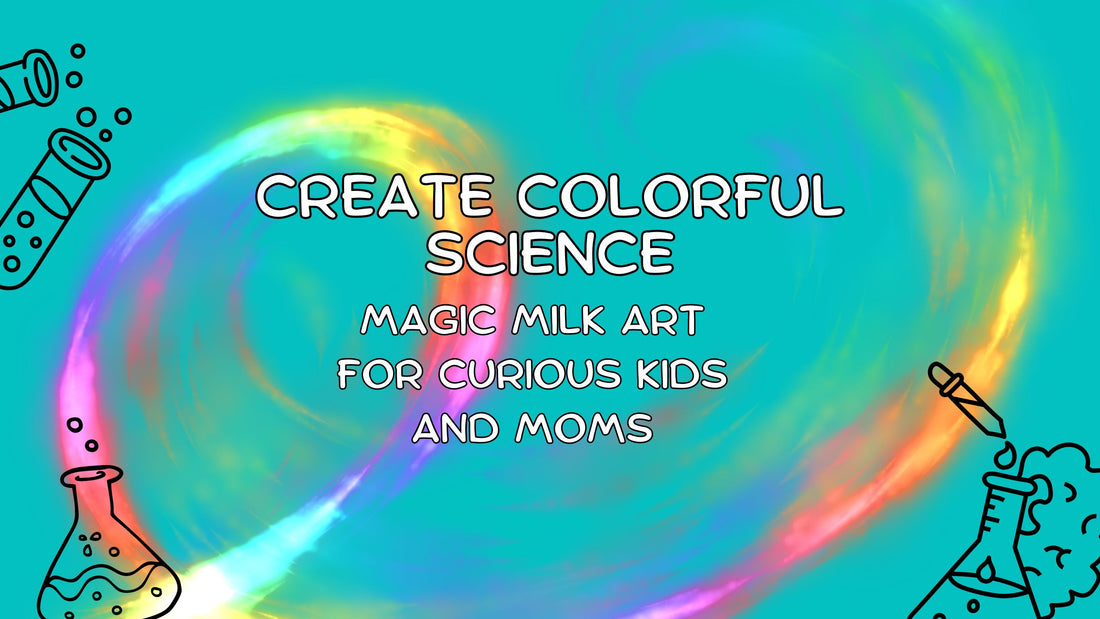Step right into our science lab, friends! 🧪🌈
Today, we're exploring the magical world of surface tension with our vibrant Magic Milk Art experiment. Ever wondered why raindrops form beads on a leaf? Or why you can slightly overfill a glass without it spilling? 🤔 That's surface tension at play!
We'll walk you through the science behind it, show you how to make your own Magic Milk Art, and give you tips to make your creations stunning. Ready to get started? Let's get creative!
Understanding Surface Tension
So, what's the science behind Magic Milk Art? It's all about surface tension! Imagine the surface of milk like a tight sheet stretched across the top. This "skin" is formed because the molecules on the surface are pulling on each other, trying to stick together. When we disturb this surface, cool things start to happen. Understanding this will help you appreciate the beautiful patterns and movements you see in Magic Milk Art.
Materials Needed for Magic Milk Art
- Whole milk (the fat content is key for vibrant patterns)
- Liquid food coloring in different colors
- A dish or shallow container
- A dropper or small spoon for adding the food coloring
- Cotton swabs
- Liquid soap
Got everything? Great! Let's move on to the fun part.
Step-by-Step Guide to Creating Magic Milk Art
Here's how you can make your own Magic Milk Art:
- Pour the milk into a dish, making sure it's flat as a pancake!
- Now here comes the fun part - get creative and drop in those colors. Red here, blue there, maybe a splash of yellow? Go wild! 🎨
- Next up, dip your cotton swab in soap and gently touch the color droplets. Watch the colors burst into beautiful patterns! They swirl, mix, and create an enchanting display of rainbow colors that's sure to captivate anyone's attention.
The Science Behind the Magic
But what's causing this colorful spectacle? Well, when you add soap to the mix, it breaks down the milk's surface tension. This causes the milk (and all those beautiful colors) to move around freely, creating our mesmerizing masterpiece.
Think of it like popping a balloon – the milk’s surface "pops" and the molecules start moving around. The soap interacts with the fat molecules in the milk, causing them to move and push the food coloring around.
So there you have it! A simple yet stunning demonstration of how surface tension works. It's not just a feast for your eyes but also food for thought!
Tips for Creating Stunning Magic Milk Art
Want to take your Magic Milk Art to the next level? Here are some tips:
- Experiment with different amounts of soap and ways of adding food coloring to see how the patterns change.
- Try using different types of milk (like skim or almond milk) to see how the fat content affects the results.
- Play around with the colors and their placements to create unique designs.
Share Your Magic Milk Creations with Us!
We'd love to see what you come up with! Share your Magic Milk Art on social media, tag us! (Facebook or Instagram) or send it to us via email: support@istiloprints.com.
Whether you've created intricate patterns or discovered a new technique, we can't wait to admire your work. Your creations might even inspire others to give it a try!
Magic Milk Art is a perfect blend of science and creativity. By understanding a bit of the science behind it, you can create beautiful, vibrant pieces of art that showcase the wonders of surface tension. So grab your materials, let your imagination run wild, and get ready to be amazed by the magic you can create with just a few simple ingredients.
Start creating and let your creativity shine! So go ahead and share your Magic Milk Art creations with us. We can't wait to see your science in action! 🌟🔬







